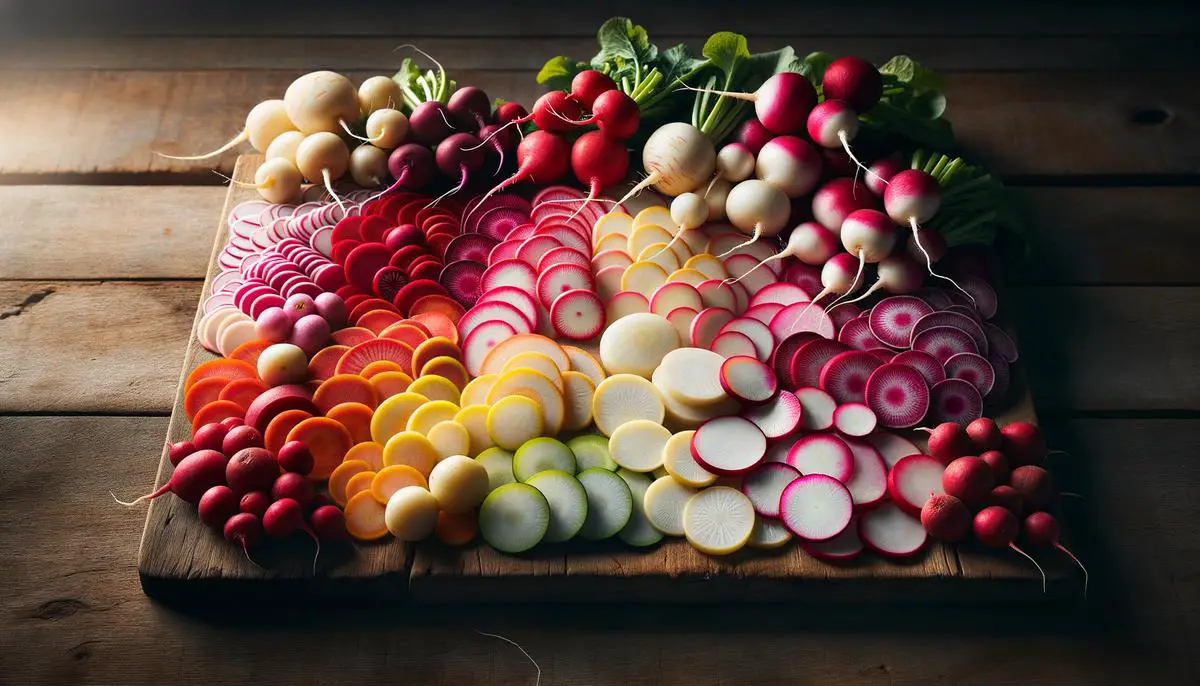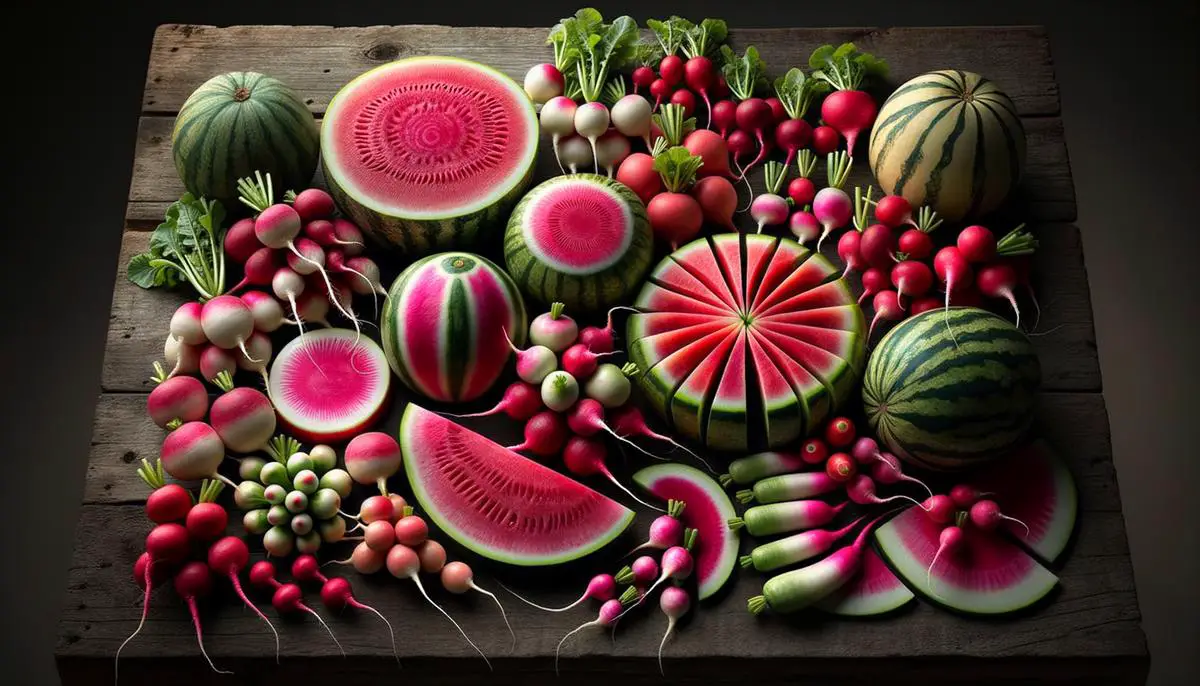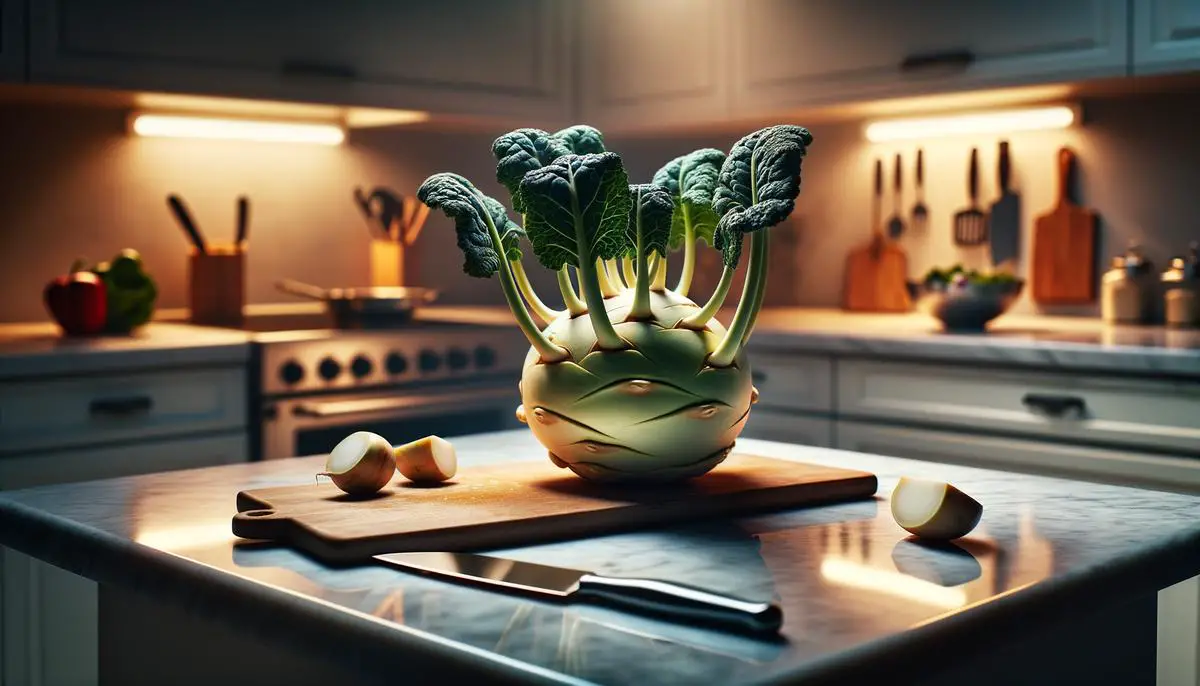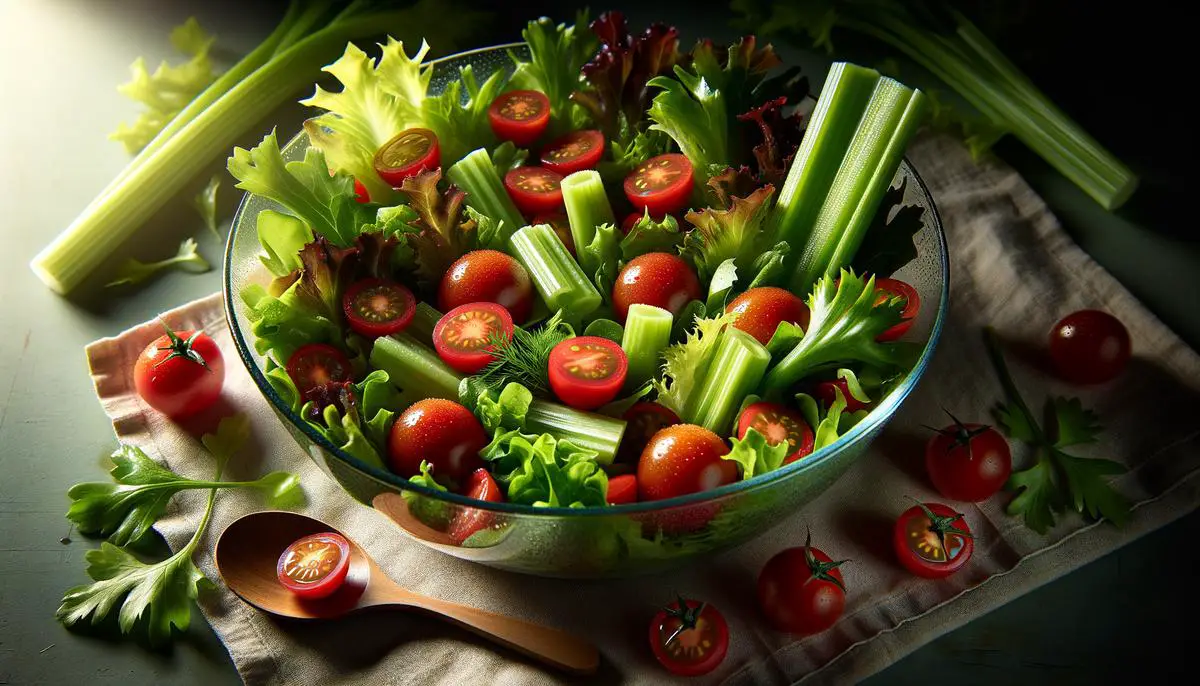
Exploring the lesser-known corners of the vegetable aisle can reveal some unexpected heroes whose contributions to both health and flavor are undeniably impressive. Vegetables like radishes, kohlrabi, cucumbers, beets, and celery might not always take center stage, but their diverse benefits and culinary versatility make them worthy of a closer look. This exploration aims to shine a spotlight on these underappreciated veggies, revealing their potential to transform meals and elevate health.
Radishes: The Crisp, Peppery Surprise
Radishes might not be the first thing you reach for in the produce aisle, but these peppery little root vegetables pack a surprising punch of benefits and versatility that often go unnoticed. Here’s why radishes deserve a spot in the limelight as the unsung heroes of the raw veg world.
Starting off with their health benefits, radishes are like the unsolicited advice from your grandma – unexpectedly beneficial and surprisingly wholesome. Low in calories but high in water content, they’re the perfect snack for anyone looking to stay hydrated and keep those hunger pangs at bay. Plus, radishes are brimming with Vitamin C, which not only boosts your immune system but also acts as an antioxidant, giving your skin that radiant glow we all crave.
But let’s talk about versatility. Radishes are like the Swiss Army knife of the vegetable world. Eaten raw, they add a crisp, peppery note to salads, tacos, and sandwiches, cutting through the richness like a well-timed witty remark. Sliced thin and sprinkled with a bit of salt, they become a refreshingly simple side dish. And it’s not just the root that’s edible – radish greens can be sautéed or added to soups for an extra nutrient kick, making the radish a zero-waste veggie. Talk about getting bang for your buck.
Speaking of flavor, radishes bring a unique spicy kick to the table – a sort of culinary wake-up call for your taste buds. This peppery punch is due to the presence of mustard oils, which not only lend that distinctive flavor but also have antimicrobial properties. So, not only do they taste good, but they’re also good for you.
And let’s not forget about the sheer variety of radishes available. From the peppery red globe radish to the mild and slightly sweet watermelon radish, there’s a type of radish to suit every palate. Each variety brings its own unique color and flavor profile to the table, making radishes a versatile and visually stunning addition to any dish.
In the end, radishes may not have the same star power as kale or avocados, but they surely deserve a bit of the spotlight. Whether you’re looking for a health boost, a burst of flavor, or just a way to add some color to your plate, radishes are ready to rise to the occasion. So, next time you’re at the market, give these unsung heroes of the raw veg world a chance to shine in your next meal.

Kohlrabi: The Sputnik of Vegetables
Meet Kohlrabi: The Space-Age Vegetable Ready to Invade Your Kitchen
Ever stared at the produce aisle and felt like you were on the set of a sci-fi movie, gazing upon a vegetable that seems more at home on an alien planet than in your salad? That’s kohlrabi for you. This bulbous, sputnik-like vegetable may look intimidating at first glance, but it’s ready to teleport your meals to another dimension of deliciousness and nutrition.
What is Kohlrabi Anyway?
Kohlrabi hails from the same family as cabbage and broccoli but holds its own unique set of superpowers. The name comes from the German words for cabbage (kohl) and turnip (rübe), hinting at its appearance and taste. Imagine if a turnip decided to dress up as an alien for Halloween—that’s kohlrabi.
A Nutritional Powerhouse Disguised in Alien Clothing
Don’t let its outer-space exterior fool you; kohlrabi is loaded with earthly benefits. This veggie is a low-calorie, high-fiber friend that’s brimming with nutrients including vitamin C, potassium, and even a bit of protein. Eating kohlrabi is like giving your body a hug from the inside, providing it with the essentials to fight off invaders like fatigue and illness.
The Taste: A Fusion of Familiar Flavors
Bite into kohlrabi and you’ll discover a taste that’s a delightful cross between a crispy apple and a tender potato, with a hint of nuttiness to boot. Its versatility knows no bounds—you can munch it raw for a crunchy snack, throw it into stir-fries for an extra kick, or roast it to bring out a slightly sweet, complex flavor that complements just about anything.
Kohlrabi: Your Culinary Companion
Fear not, culinary adventurers, for kohlrabi is not just a pretty (or peculiar) face. Its leaves are edible too, offering a kale-like texture with a spicier kick. Whether you’re concocting a vibrant slaw, whipping up a creamy soup, or roasting slices to caramelized perfection, kohlrabi is your ticket to a meal that’s out of this world.
Kohlrabi on the Rise: From Obscurity to Stardom
Once relegated to the sidelines, kohlrabi is making its way into the hearts and kitchens of food enthusiasts worldwide. Pro chefs and home cooks alike are embracing its unique flavor and texture, proving that this alien-looking vegetable deserves a starring role on your plate.
In conclusion, kohlrabi may not change how you think about vegetables altogether, but it’s certainly a game-changer for anyone looking to elevate their culinary creations with something out of the ordinary. Forget about galaxies far away; the next big thing in your kitchen could very well be this out-of-this-world vegetable you’ve been overlooking.

Cucumbers: The Cool Classic
Stepping away from the vibrant world of radishes and the unique intrigue of kohlrabi, let’s delve into an ingredient that’s as familiar as an old friend yet boasts an untapped reservoir of culinary potential – cucumbers. Lesser hailed than its crunchy cousin, the radish, and the recently applauded kohlrabi, cucumbers hold the power to elevate your meals from the realm of the ordinary to the extraordinary with their understated elegance and versatility.
Cucumbers, with their cool, refreshing taste and high water content, are often relegated to the sidelines as mere salad ingredients or garnishes. However, this understated vegetable carries with it a freshness that can cut through the richness of dishes, bringing a balance that is both delightful and surprising. Imagine the crispness of cucumbers in a creamy potato salad or their refreshing bite in a hearty wrap – it’s these small additions that can radically transform a meal.
Moreover, cucumbers come in a variety of shapes, sizes, and even flavors. From the common slicing cucumber found in any grocery store to the exotic Armenian variety, each type offers a unique texture and taste. This variety allows for endless experimentation in the kitchen, ensuring that dishes can always have a fresh twist.
Yet, the transformational power of cucumbers isn’t limited to their raw form. Pickling cucumbers can introduce a zesty flair to burgers, sandwiches, and even pizzas, adding a layer of complexity with their tangy crunch. This method of using cucumbers can act as a gateway to exploring different types of pickling recipes, from sweet to spicy, allowing you to customize your dishes in exciting new ways.
Cucumbers also play a key role in world cuisines, adding unique dimensions to traditional dishes. Consider the coolness of tzatziki in Greek cuisine, where grated cucumber blends with garlic, yogurt, and herbs to create a sauce that’s both refreshing and rich. Or, think about the crisp addition of cucumber to sushi rolls, where its texture contrasts beautifully with the softness of the rice and fish.
The transformative potential of cucumbers extends beyond the plate. Cucumber-infused water is a spa day staple for good reason – its subtle flavor encourages hydration, proving that cucumbers can elevate even the simple act of drinking water.
So, next time you find yourself reaching for a familiar ingredient to add a touch of freshness to your dish, remember the humble cucumber. Its capacity to transform meals from simple to sublime should not be underestimated. Whether through texture, taste, or its cooling effect, the cucumber is more than just a side character in the culinary world. It’s a versatile star, ready to make your next meal unexpectedly delightful.

Beets: Earthy Jewel Tones
Now, let’s shift our focus to beets, those vibrant jewels of the vegetable world. Diving into why beets should be your go-to for not just an injection of color but also a burst of flavor in your meals.
First off, beets are like nature’s candy. Yes, you read that right. When roasted, their natural sugars caramelize, transforming them into sweet, rich bites that are hard to believe are actually good for you. This caramelization isn’t just about sweetness; it adds a depth of flavor that can elevate a simple salad or side dish to something you’d expect at a high-end restaurant.
Beyond their flavor, beets are a visual feast. From the deep purples and reds to the striking golden varieties, beets add a pop of color to any plate, making your meals Instagram-worthy without even trying. Eating with your eyes first has never been so literal.
But, the magic of beets doesn’t stop at taste and aesthetics. They pack a nutritional punch with their high levels of essential vitamins and minerals, including potassium, iron, and vitamin C. They’re also rich in antioxidants, particularly betalains, which give them their vibrant color and are linked to numerous health benefits, including reduced inflammation and heart disease risk.
For those concerned about preparation, fear not. Beets are surprisingly versatile. You can roast them to unlock their sweetness, pickle them for a tangy snack, blend them into smoothies for a nutrient boost, or even sneak them into desserts to reduce added sugar content without sacrificing moisture or flavor.
And then there’s the beet greens. Often overlooked, these leafy tops are not only edible but are packed with flavor and nutrients. Sautéed with a bit of garlic and olive oil, they make a tasty and healthy addition to any meal, ensuring no part of the beet goes to waste.
Finally, beets have a unique ability to blend with a wide range of flavors. They’re as comfortable in a salad with goat cheese and nuts as they are in a hearty stew with beef and potatoes. This chameleon-like quality makes them an invaluable tool in the home cook’s arsenal, ready to adapt and enhance whatever dish you’re preparing.
In conclusion, beets offer more than just a pretty face. They bring a complexity of flavor, a wealth of health benefits, and a versatility in the kitchen that few vegetables can match. Whether you’re looking to add some sweetness to your dishes, brighten up your plate, or pack in some extra nutrients, beets are ready to step up to the plate. And who knows, they just might surprise you with how delightfully tasty they can be.

Celery: The Underestimated Crunch
Enter the humble celery, often seen as just a crunchy sidekick in salads or a vessel for peanut butter. But, could this unassuming vegetable be the unsung hero of your kitchen, ready to transform your culinary creations with its crisp texture and refreshing taste? Let’s dive into why celery deserves a prime spot in your vegetable drawer.
First, the health credentials of celery are nothing to scoff at. It’s packed with fiber while being incredibly low in calories, making it the perfect snack for anyone looking to maintain a healthy diet without sacrificing on crunch. Celery also boasts a high water content, keeping you hydrated and feeling full longer. Plus, it’s rich in vitamins and minerals, including Vitamin K, potassium, and folate, supporting overall health and well-being.
Now, let’s talk versatility. Celery elevates dishes far beyond the realms of the humble ants-on-a-log snack. Its crisp texture adds an unparalleled crunch to salads, while its slightly peppery, refreshing taste can brighten up hearty stews and soups. But the magic of celery doesn’t stop there – it’s a cornerstone of the culinary holy trinity in many cuisines, playing a crucial role alongside onions and carrots in mirepoix, which forms the flavor base for countless dishes.
Think celery is just for eating raw? Think again. Braising or roasting celery transforms it, bringing out a sweet, almost nutty quality that can surprise those used to its raw bite. And let’s not forget about celery leaves – these often-discarded tops are packed with flavor, perfect for garnishing dishes or incorporating into pestos and salads for an extra zesty kick.
Celery’s role in beverages shouldn’t be overlooked either. From the classic Bloody Mary cocktail to health-forward green juices, celery adds a refreshing, vegetal note that complements both savory and sweet flavors. Even simply adding a few stalks of celery to your water can infuse it with subtle flavor, encouraging increased hydration throughout the day.
In the world of snacks, where crunch is king, celery stands out as a vehicle for all sorts of toppings. Peanut butter and raisins are just the beginning – try it with hummus, cream cheese, or any spreadable delight you desire. Its sturdy structure holds up well under a heap of toppings, making it the perfect snack for those seeking both nutrition and flavor.
So, is celery the crunchy, refreshing game-changer your kitchen has been missing? Absolutely. With its health benefits, culinary versatility, and undeniable crunch, celery proves that it’s much more than just a support act – it’s a star in its own right, ready to elevate your meals from ordinary to extraordinary. Whether you’re looking to add a crisp texture to dishes, seeking a low-calorie snack, or wanting to explore new flavor combinations, celery offers endless possibilities for creative and health-conscious cooks alike. Forget about relegating celery to the sidelines; it’s time this crunchy, refreshing titan took center stage in your culinary creations.

As we’ve journeyed through the colorful and varied world of vegetables that often go unnoticed, it’s clear that each offers unique benefits and flavors that can enhance any dish they grace. From the peppery bite of radishes to the refreshingly crisp presence of cucumbers, and the earthy sweetness of beets, these vegetables prove that the true magic of the culinary world often lies in the most unassuming ingredients. Whether you’re an adventurous chef or a home cook seeking to enrich your meals, embracing the diversity and richness of these underappreciated vegetables can unlock new dimensions of taste and nutrition in your cooking.



